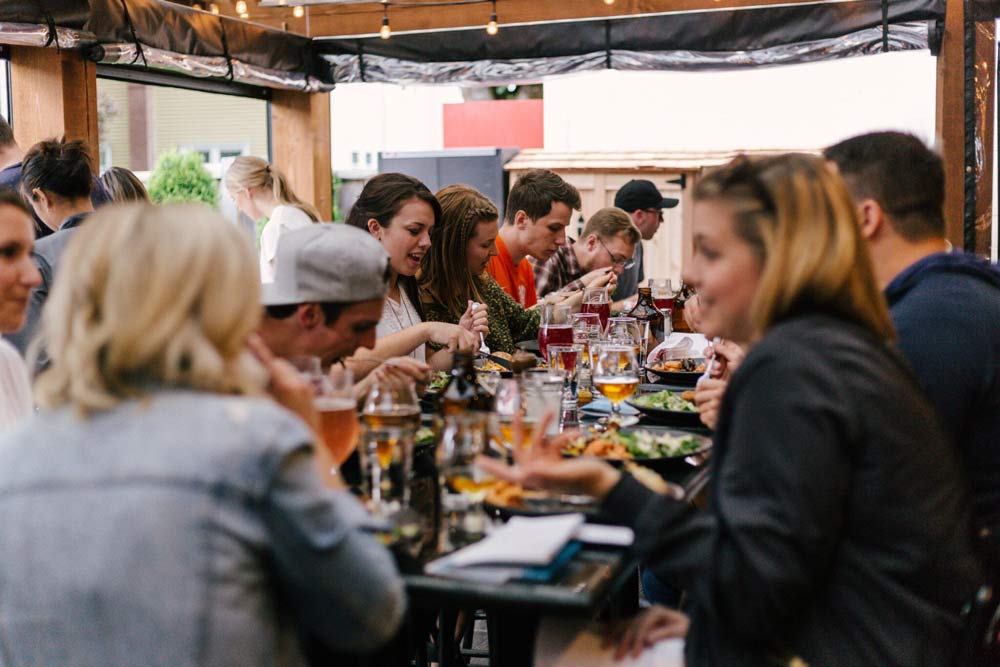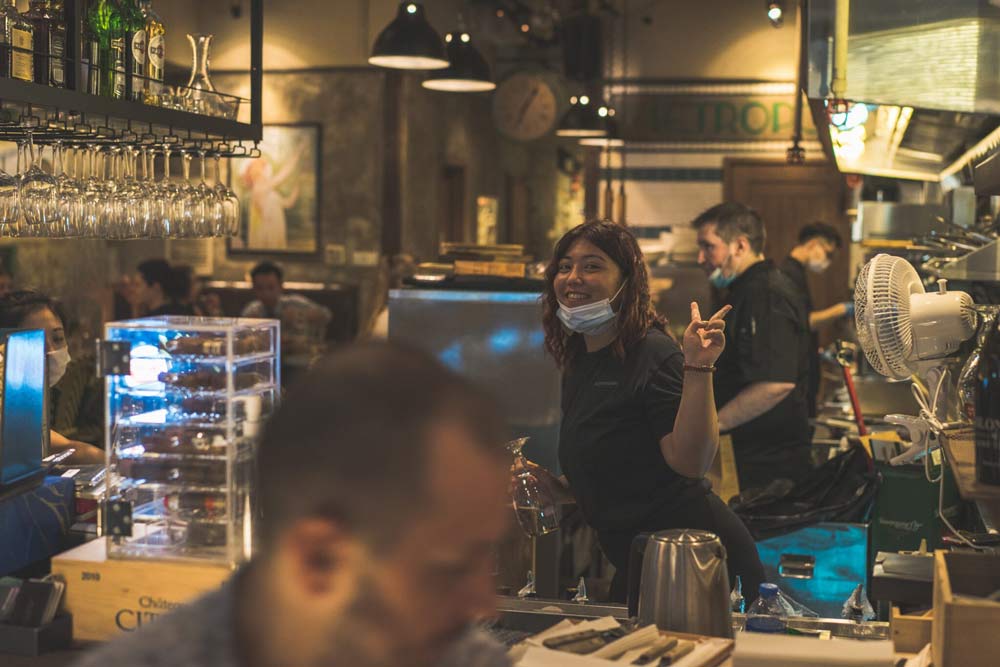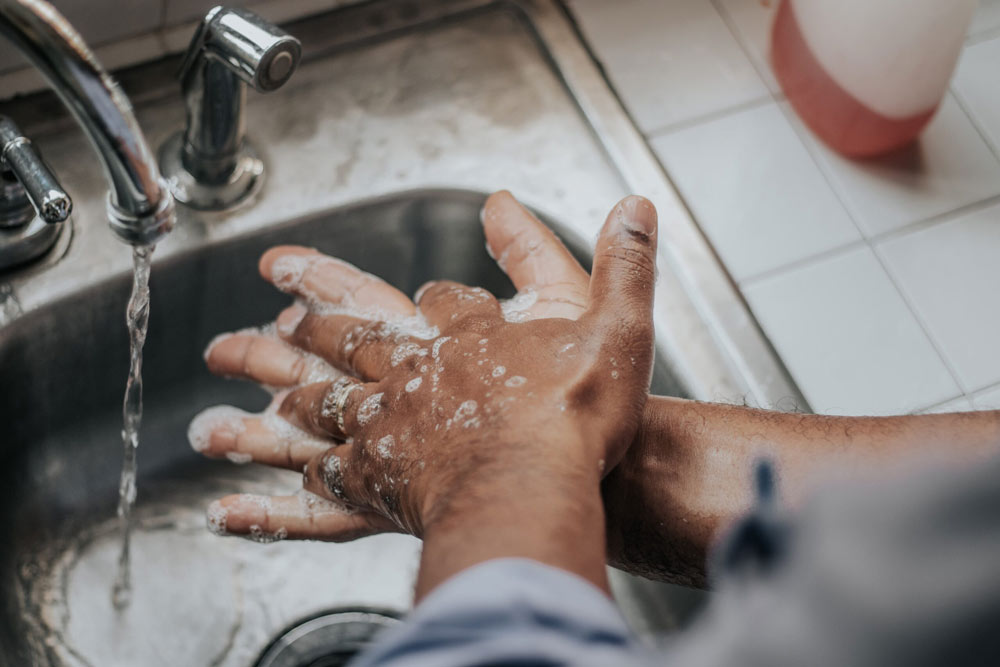Since March of 2020, restaurants across the country have been largely closed to the public in an effort to slow the spread of COVID-19. Even as some restaurants have reopened their doors for takeout and delivery, dining rooms have sat empty as owners anxiously wait for the green light to reopen their full-service operations.
Though not every restaurateur will choose to reopen when local dining restrictions are lifted, this information can help you prepare for the day that it makes sense for you to open your business back up.
To help you create a plan for your own restaurant opening, we’ve created a comprehensive guide of nine steps to reopening a restaurant, including:
Understand Your Local Restrictions
Before you can even begin creating a plan for your restaurant opening, you need to understand your local restrictions inside and out. The reopening is intended to be staggered, and individual states and counties are left to determine their own dining restrictions. While there’s no one-size-fits-all plan for reopening restaurants, most of the new restrictions revolve around issues such as capacity and physical distancing. With that in mind, there are some best practices that all restaurateurs should keep in mind when planning for reopening.
Capacity
One of the biggest considerations for any restaurant reopening is capacity. This refers to limits on how full a dining room can be.
For restaurants that have a significant number of tables in their dining rooms, it’s important to do the math and determine whether limited capacity dining can generate more revenue than takeout and delivery. If the answer is no, it might be worth keeping your dining room closed until capacity restrictions are lifted.

Physical Distancing
By now, most people are familiar with the physical distancing rules of maintaining at least six feet from one another at all times. And even as restaurants reopen, this rule remains the gold standard.
However, keeping customers six feet apart may mean rearranging or even removing tables from your floor plan to give guests enough space to move around safely. This could also mean making use of outdoor or patio space where it may be easier to separate tables.
Keep in mind that physical distancing measures will also apply to your staff. Think about how you can space out cooking stations to help staff maintain distance from one another. If your kitchen is on the smaller side, this may mean significantly limiting the number of staff working in the kitchen.
Other Safety Measures
While physical distancing measures and limits on capacity are to be expected, there are some not-so-obvious rules that restaurants should prepare to accommodate – especially when it comes to food safety and personal hygiene. It’s clear that the rules and restrictions for reopening vary from one location to the next, and restaurants should be prepared to make significant changes to their day-to-day operations.

Prepare for Staffing Adjustments
Despite the laundry list of new rules, one of the positives of a restaurant reopening is the opportunity to bring back staff that may have been furloughed or laid off. However, restaffing your restaurant may not be as simple as calling up all of your old employees. Some employees may have found other work, while some may be unable or unwilling to return to work immediately. With this in mind, one of the first steps to reopen a restaurant should be setting aside enough time to contact past employees and, if necessary, hire new ones.
Establish Food Safety Best Practices
For restaurants, food safety has always been a top priority. But while you may have received rave reviews from the health inspector in the past, the COVID-19 pandemic has given new meaning to the concept of food safety. Now more than ever, you need to ensure that your food is prepared and served in a safe environment.

Implement Personal Hygiene Protocols
Prior to your restaurant opening, ensure that staff and customers understand the importance of personal hygiene in protecting their own health and the health of those around them.
Communicate with Vendors
If you’ve been closed for the duration of the pandemic, your fridges are probably looking a little empty. While it may be tempting to wait until the last minute to restock your inventory, keep in mind that every other restaurant will be doing the same thing. Instead, start stocking up on shelf-stable supplies in advance, allowing plenty of time to stagger your deliveries. If necessary, re-evaluate supplier contracts and adjust as needed.

Create a New Floor Plan
Part of accommodating physical distancing involves updating your restaurant floor plan. Even if a minimum distance between tables isn’t mandated in your area, leaving a little extra room can make guests feel more at ease.
Part of streamlining your floor plan can also include upgrading your POS.
If you’re still using a legacy POS, this system is likely taking up a major chunk of your dining room. If there’s room in your budget, consider switching to a smaller, modern POS solution prior to your restaurant opening. Using a modern POS not only frees up more room for staff and customers to move around. However, features such as table management software can make it easier to keep track of ongoing changes to your floor plan.
Consider Technology
We already mentioned having a modern POS in place can help with aspects like floor plan and table management. But your POS is not the only piece of technology that can make your restaurant reopening a little smoother. With strict limits on capacity, reservations software can be a useful tool in controlling the flow of diners through your restaurant.
A reservations system not only makes it easier to stagger seatings, it can also reduce the number of walk-ins waiting for a free table. Whereas, an online ordering system can make it easier for guests to order takeout and delivery directly from your website, instead of picking up the phone or using a third-party app.

Communicate with Customers
Even if you’ve continued to offer takeout and delivery throughout the pandemic, regular communication is important to keep customers in the loop about any changes to your business – whether that’s reopening your dining room or simply extending your hours of operation. If you’re not communicating regularly, many people may simply assume that your restaurant is closed.
As you plan your restaurant opening, make sure you communicate with customers on the following channels:
- Website: Address health and safety concerns by posting the steps you’re taking to mitigate the spread of COVID-19.
- Email: Drum up excitement for your reopening with an e-blast to your subscribers.
- Social Media: Use the visual nature of social media to showcase star menu items.
- Third-Party Platforms:Ensure your hours of operation and current menu are updated across all third-party apps, like Uber Eats and DoorDash.
Continuing Offering Takeout and Delivery
After months of relying on takeout and delivery, many diners have adapted to this new off-premise restaurant experience. These habits are unlikely to disappear overnight, and some guests may continue to prefer dining at home for some time, even after restaurants have reopened their doors. Restaurateurs need to prepare for the gradual transition from takeout-only to dine-in by maintaining some of the takeout and delivery systems that consumers have come to rely on.
While this doesn’t mean you have to continue delivering pantry staples and meal kits, it’s a good idea to have some takeout and delivery options for customers who are still wary of dining in.
After months of keeping your customers at arms-length, it’s tempting to want to throw open your doors and go back to normal. But with the threat of COVID-19 still lingering, it’s important to recognize that there’s no normal to go back to right now.
Conclusion
Things have changed dramatically for both restaurateurs and customers, so if you’re planning a restaurant opening in the near future, you’ll need to have a solid plan in place to prepare for this new reality.
This blog was inspired from https://www.touchbistro.com


